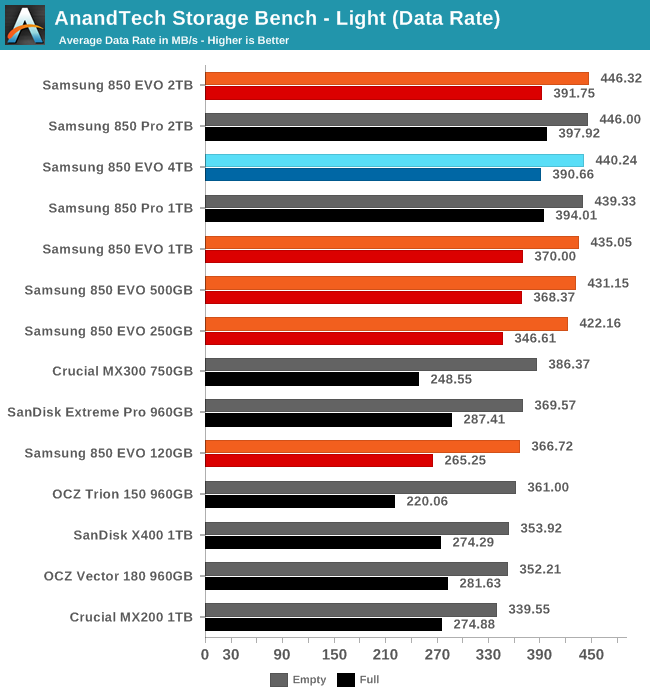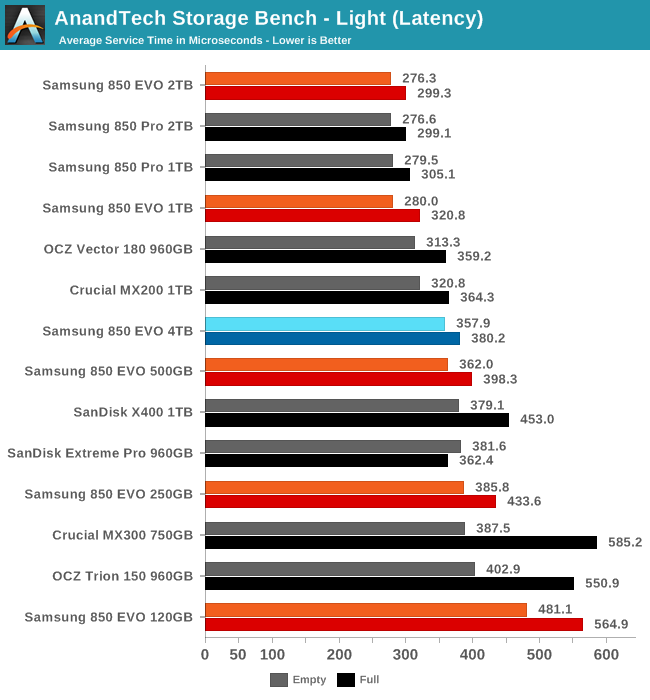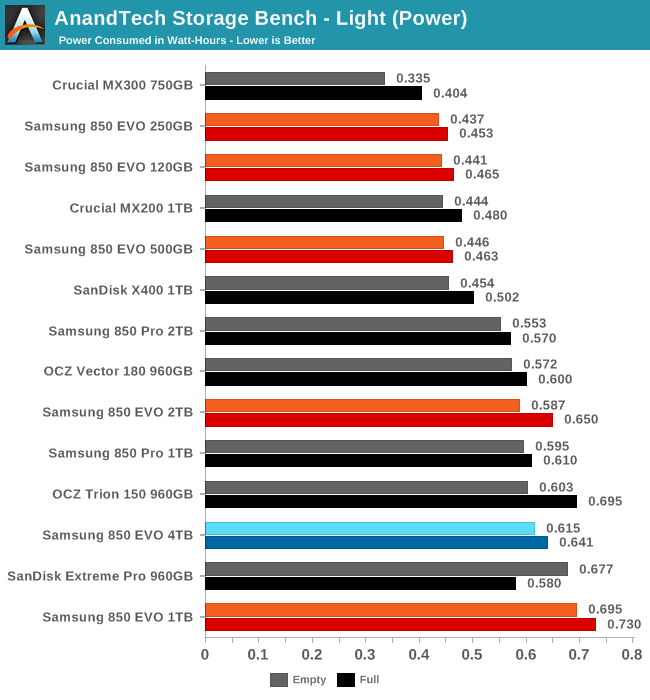The Samsung 850 EVO 4TB SSD Review
by Billy Tallis on July 11, 2016 10:00 AM ESTAnandTech Storage Bench - Light
Our Light storage test has relatively more sequential accesses and lower queue depths than The Destroyer or the Heavy test, and it's by far the shortest test overall. It's based largely on applications that aren't highly dependent on storage performance, so this is a test more of application launch times and file load times. This test can be seen as the sum of all the little delays in daily usage, but with the idle times trimmed to 25ms it takes less than half an hour to run. Details of the Light test can be found here.

The 4TB 850 EVO is in a four-way tie for highest average data rate, and the Samsung drives in general score very well and quite close to the SATA interface limits.

The 4TB 850 EVO's average service time is not top notch, but is still reasonable for a high-end SATA drive.

Once again the latency of the 4TB isn't the best and isn't quite as good as the 1TB and 2TB counterparts, but it's still better than all the other TLC drives.

The power usage of the 4TB EVO is a bit worse than the 2TB model when fresh but is slightly better for a full drive, showing that this drive isn't worth having if you're barely going to use it.










145 Comments
View All Comments
JellyRoll - Monday, July 11, 2016 - link
It is relative. 75 total drive writes of 4TB are huge.Daniel Egger - Monday, July 11, 2016 - link
Not at all. There're many scenarios where one would chose a larger drive without immediate need. In fact I'd never take a drive I can immediately fill up a 100%, what'd be the point in that? Also this is a consumer drive and how many customers do you know *writing* away TB after TB, many kinds of data are actually write-once-read-often...My laptop SSD has been powered on for pretty much exactly two years now and seen 10TB writes per year. My home VM server sees 9.2 TB writes per year. So pretty much harmless and those two cases are already very much non-consumer scenarios...
ddriver - Monday, July 11, 2016 - link
If you really do a lot of writing, say you work with RAW 4k video, then you really don't care that much about latency, all you care about is bandwidth and capacity. In this case, what you really need is a good RAID controller and a dozen of good old HDDs.vladx - Monday, July 11, 2016 - link
This drive is not suited for 4K video work, everyone knows that. Using an EVO for that kind of work iwould be very irresponsible and failure is 100% in the hands of the user .Oxford Guy - Monday, July 11, 2016 - link
I'll agree with you if there is a big red sticker on the box that says that.vladx - Tuesday, July 12, 2016 - link
@Oxford Guy: And this why we get people ranting about SSDs when it's their own fault for being ignorant.Kevin G - Monday, July 11, 2016 - link
Indeed and at this point you'd want a fast NVMe drive for high quality 4k captures.A 4 TB SATA SSD does have utility as a means to provide storage for an assort of cameras and equipment build around SATA drives. There are a lot of those out there mainly because U.2 hasn't taken hold (yet?).
ddriver - Monday, July 11, 2016 - link
Who captures video to PC LOL. Who logs a computer along with a camera.Impulses - Monday, July 11, 2016 - link
Some high end cine cameras actually capture straight to SSDImpulses - Monday, July 11, 2016 - link
Pretty sure he meant it as in 'working with 4K' anyway.